The Definitive Guide to Employee Engagement

This employee engagement guide was created as a detailed instruction manual for managers, HR professionals & CEOs who struggle with the concept of an engaged workforce. Read the fruit of our research and experience to plan out your strategy and seriously start investing in employee engagement. If you want to reap the benefits of an engaged, loyal, and productive workforce, start today!
What is employee engagement?
Before we move on to what employee engagement actually is, it’s important to understand what it’s not. Old school managers tend to scoff at it, calling it a ‘hippie’ idea according to which ‘everyone needs to be happy at work’. However, it’s much more than that. While happiness and satisfaction at the job are important within the concept of employee engagement, they are not what it’s all about.
So, to sum up, employee engagement is NOT:
- Employee happiness: employees can be happy, yet unproductive, unmotivated, and lost at their job.
- Employee satisfaction: it’s easy to be satisfied with your job and still be disengaged. A lot of employees are collecting a decent paycheck, doing little to no work, and clocking out early.
- Employee well-being: Do you have a gym on the premises? Offer healthy snacks and discounted massages? It’s all just extra (unnecessary) costs unless your employees are delivering more because of it.
If all of these things don't translate into elevated performance, we’re not talking about employee engagement.
"Employee engagement is defined by the willingness of your employees to continually go that extra mile for the company because you’ve managed to make success a matter of personal pride for them.” — Emma Bridger
This definition captures the essence of why engaged employees are worth their weight in gold. They always do their work diligently and with a “pedal to the metal” attitude because doing any less than that would be a personal failure.
Stimulate engagement in your company with Ambassify
Join a 15-minute group demoWhat sets engaged employees apart?
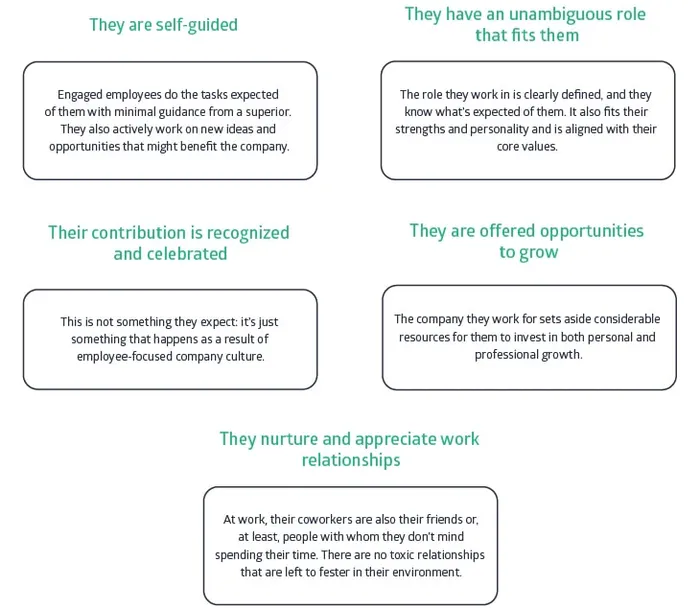
Why employee engagement matters

Engagement (or disengagement) is something that partially shapes every employee — their focus, work ethic, and performance. And, since everyone’s work affects the bottom line of a company, it’s safe to say that engagement has a profound effect on every aspect of a business endeavor.
This is called the Service-Profit Chain, and it was first theorized about by Harvard researchers way back in the nineteen nineties. Here’s a visual representation of the Service-Profit Chain: 
As you can see, engaged employees account for a lot of value that, ultimately, results in profit. One of the responsibilities of an organization is to create the conditions that allow this natural flow to happen.
Research firm Gallup takes employee engagement seriously and collects empirical data that confirms that it’s not a concept cooked up by bored HR professionals. While those positive engagement stats are heartwarming to look at, as a leader, you should be more concerned with the impact of disengaged employees, which can be profound and crippling to the economy.
Employee engagement statistics
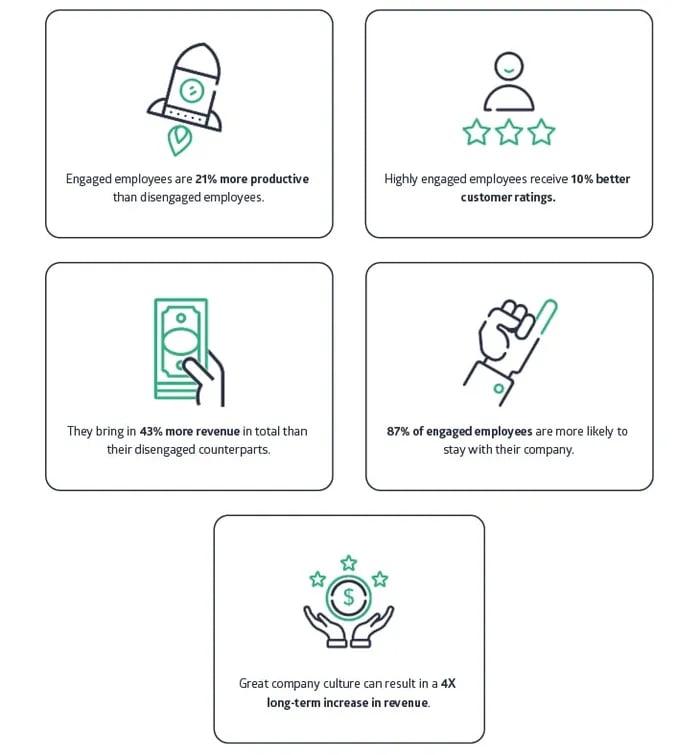
Sources:
- Gallup State of the American Workplace
- Hay Group Study - Culture Amp Blog
- Corporate Culture & Performance, Prof. James Heskett
The link between employee engagement and employer branding
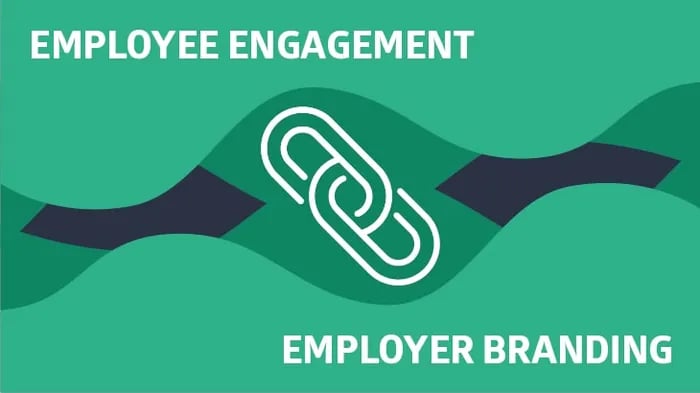
Before shifting our focus to the elements that drive employee engagement, let’s take a brief moment to discuss the link between engagement and employer branding.
Employer branding refers to a set of practices a business adopts in order to become more attractive to top talent. As any HR professional will tell you, hiring the right person for the job is becoming increasingly more difficult with every passing year. Thanks to the global internet coverage, qualified employees can pretty much choose who to work for, and where they are in the world is becoming less and less important every day.
Employee engagement is intimately connected with employer branding. According to research conducted by Josh Bersin Academy2, the biggest indicator of whether or not an employee will recommend the company they work for is the company’s culture. Companies that score high on culture, high on career opportunities, and high on overall satisfaction with leadership and values can count on a recommendation from their employees. Of course, when companies score high on these things, it’s almost certain that their employees are highly engaged.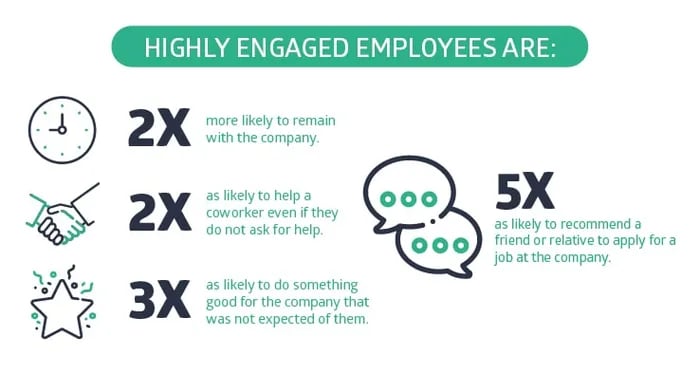
Working on your employee engagement levels will not only result in increased productivity (and, ultimately, revenue), but it will also make you more attractive to the talent you want working for you.
Discover how to boost employer branding & engagement with Ambassify
Chat with our expertsThe 3 elements that support employee engagement
For most companies, creating an engaged workforce is a conscious effort. It requires planning and resources, and it takes time. This is especially true if you’re trying to boost employee engagement throughout your organization.
True employee engagement happens when employees are emotionally invested: when they care about the company's purpose, their role in that purpose, and their coworkers. You can help that process along by focusing on the things that matter. We identified those things and named them the 7 supporting elements of employee engagement. Let’s explore them:
1. Company-employee value alignment.
People prefer to work for companies they feel represent them and their particular values. When that connection exists, the mere act of going to work becomes something far greater. Companies that have a culture-growing mindset thrive because they cultivate brand evangelists who are committed and enthusiastic about the job they do.
Every great company has its “why”. Hidden in that simple statement is the reason why employees get up to go to work. If employees feel that there’s a gap between their values and those of the company, they will be less enthusiastic about everything they do.
It’s your job — either as an executive or a manager — to work on developing a concise, clear “why” of your company, as well as to define the values that go with it. As a leader, it’s your responsibility to lead by example in all things, including upholding the tenets of your company culture.
2. Company culture alignment action steps
- Find your WHY. If they haven’t already, the founders (or the board) should sit down and write a concise statement that answers why the company exists in the first place.
- Craft an inspired mission statement. Aim for one or two sentences that describe the problem you exist to solve. And, of course, attach underlying values to that sentence — a couple of authentic and actionable processes and standards that help you achieve your mission.
- Work on developing a company culture that’s based on that mission and values. Your why needs to be reflected in how you communicate, do business, hire people, and everything else. Every employee who is not aware of your mission cannot fully contribute to it.
- Base all your programs and activities on your values. If one of your core values is providing excellent customer service, a yearly award honoring employees that exemplify that should be implemented. Also, social and team-building activities that help employees practice this particular skill need to be emphasized.
- Set an example and be consistent. No one in the company is exempt from adhering to company values. Hold everyone to the same standard, and make sure that they reflect your why in a way that makes everyone who knows about it proud.
3. Professional and personal growth opportunities
If your employees feel like it’s them giving, all the time, without getting anything in return, they will have zero remorse when an opportunity to leave comes along. Personal growth and development opportunities are a very important part of a company culture that supports and actively encourages employee engagement. Employees need to know that they are worth your investment when they are growing their professional and personal skill sets.
It’s the tech giants that have changed the paradigm for every other business in the world. In places like Google, Microsoft, Facebook, and others, continuous learning is a necessity, and the resources are always readily available. That’s because most of these companies treat employees as capital, not as a resource. They understand that people can be shaped, molded, and improved so that they execute their tasks more efficiently. And, psychologically, people are wired to always strive for betterment so the equation balances out.
Simply put, people want to learn stuff, whether they know it or not. If you want to keep them, you need to provide them with an environment that recognizes and encourages that.
How to tackle employee development and growth issues
- Educate managers on the value of learning. People in key positions should actively encourage employees to take advantage of company resources. Whenever they see potential being wasted, they should be confident enough (and supported) to encourage employees to pursue a path that will help them grow their careers.
- Make learning comfortable, easy, and available. This means having in-house learning materials and programs or subsidizing formal education. It also means teaching employees that allocating a percentage of work hours to professional development (and mastering a new skill) is preferable to delivering sub-par results.
- Encourage passion projects & cross-departmental collaboration. Most employees have a pet project related to their role (or your 'why') somewhere in them that they are dying to work on. Allow them to allocate a percentage of their work time to that project, and encourage making it an opportunity to meet and socialize with people from other departments.
- Subsidize personal growth & betterment. Instead of investing money in all-too-frequent team-building events, make it available for personalized classes, courses, and activities that make it easier for employees to pursue something they’ve always wanted but found cost-prohibitive.
Employee health and well-being
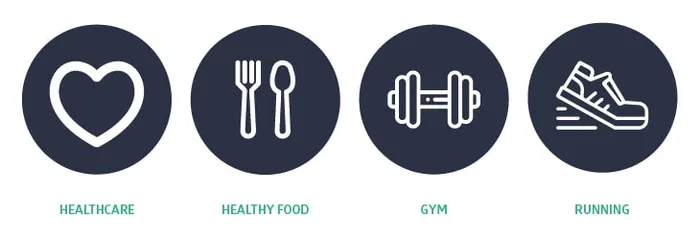
Our jobs are slowly killing us. We’re not being overly dramatic here — scientific research shows that this is actually true. A recent study3 links sedentary workplaces and job descriptions with negative long-term health consequences. These include increased chances of diabetes, cardiovascular diseases, cancer, and early death.
How can we expect employees to give their 100% if the mere act of coming to work is a nail in the proverbial coffin? It’s simply not realistic. Additionally, employee engagement is strongly linked to the perceived impact of work on physical health. According to Gallup, close to 62% of employees who identify as strongly engaged feel that their work has a positive effect on their physical well-being.
That’s because they work in companies that actually invest in making them feel good. It’s an opportunity to save money by increasing productivity and decreasing sick days and employee churn.
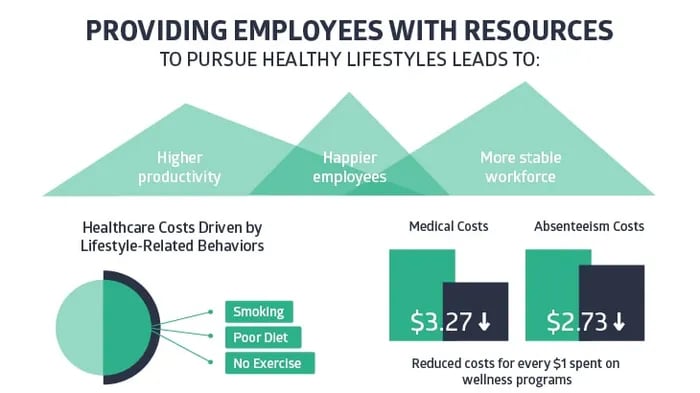
When focusing on employee health, you should strive to design programs that are physical, long-term, competitive, and fun. Instead of mandating a run or a gym visit, design the program and create some hype around that so that employees feel as if they are missing out if they are not participating.
Healthy snack options also play a part in overall employee health. Most employees will eat at least one full meal while on the job. If you can make sure that it’s a healthy meal, and offer some variety while at it, your employees will thank you for it.
The blueprint for a healthy, productive company
- Build long-term health and wellness programs. A healthy lifestyle is not about hitting the gym every day. It’s about building a culture that values physical activity.
- Make moving around a part of the daily routine. Holding walking meetings, avoiding the use of the elevator, and investing in standing desks are just some of the things that you could implement.
- Gamify the experience through competition and technology. A bit of friendly rivalry can go a long way when it comes to employee buy-in. Keep track of everyone’s progress by providing them with digital fitness trackers.
- Bring in personal trainers. Or yoga instructors, marathon coaches, deadlift experts — really, any professional that can shake up your employees with something new and exciting.
- Provide healthy snacks at the office. If you can’t go all out and have a fully-equipped kitchen in your offices, at least make sure that your break room is stocked with healthy snacks and organic fruit juices.
- Promote mental health awareness. Keep employee depression and anxiety at bay by letting people know that it’s OK to talk about it. Have mental health systems in place that allow you to provide access to a trained professional when need it, or support and subsidize an employee’s effort to get help.
Employee advocacy made easy
Employee engagement and employee advocacy are two distinct but very connected things. In fact, it’s safe to say that fully engaged employees are one of the best ambassadors that a company can have. They are happy and satisfied at work for all the right reasons, which means that they are more inclined to talk about their company in a positive light.
Discover how to drive engagement through advocacy
Try Ambassify nowInterestingly, though, a well-thought-out advocacy program can also help boost employee engagement.
- Advocacy creates a feeling of greater involvement. Employees who are involved in creating and sharing company-centric content feel connected to it. The fact that they are doing something that directly influences how their company is perceived creates a sense of belonging, which, in turn, can naturally increase their feeling of engagement.
- It provides a personal branding opportunity. More and more people are becoming acutely aware that, to advance their careers, they need to build a personal brand. Of course, all of this makes work hit closer to home, which is why they are generally more engaged when carrying out their tasks.
- An element of gamification gets added to the mix. Competing against fellow coworkers can be fun, and can drive employees to invest a lot of effort into advocacy activities. And, as we know, fun, happiness, and satisfaction are key components of employee engagement — when they go up, the overall engagement with work goes up, too.
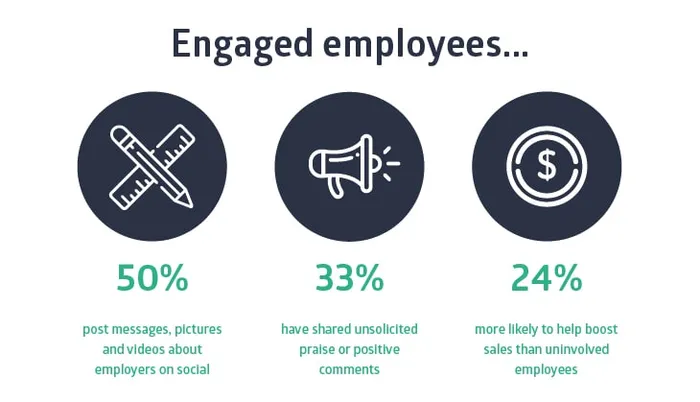
If you’re not already harnessing the power of employee advocacy, you should definitely consider doing so. Nothing beats an enthusiastic employee when it comes to selling your company and its products and services.
How to fast-track your employee advocacy program
Are you wanting to launch your very first advocacy program and aren't sure where to start? You came to the right place because in our article "4 Steps to Start an Advocate Community," we uncover the major, essential steps to launch your first advocate community.
But how do you ensure it's a success? How do you ensure your employees are having a good time on it, are active members, and most important of all, also feel engaged? Here are our best tips, collected from year of experience with our customers:
- Select an enthusiastic advocacy team. While you don’t need to have a formal advocacy officer, it’s important to create a core team that’s excited about the opportunities that employee advocacy brings. Make sure that the team has at least one top management member — they will help with internal obstacles.
- Choose your employee advocacy platform wisely. Ambassify makes employee advocacy a breeze: it’s intuitive, easy to set up and use, and has all the features you need to gamify the experience. What you don’t want is a complicated advocacy solution that makes employees feel like they are doing extra work.
- Get employees hooked. Before moving on to big asks, create challenges that are easy to do, such as social media shares, likes, and similar. Once people get a feel for the platform, they are more likely to set aside some extra time for more time-consuming challenges, such as writing a post, reviewing the company on Glassdoor.com, and similar.
- Make rewards achievable and attractive. Rewards should be unique to your company. They should also be realistically achievable. A high rewards threshold will only discourage employees from participating.
- Share the impact results with your employees. People will like to know that what they are doing is contributing to the bottom line. Every few months, share a couple of business wins that would not have been possible without the employees active in the advocacy program.
People-focused managers know how to grow teams
It’s amazing how much of an impact your leadership pipeline has on the overall employee engagement levels in your company. Let’s put it like this — even if you are getting stellar marks on every other item on this long list, if your managers are sub-par, most of your employees will be disengaged at work.
In a study published in 2009 by the Harvard Business Review5, 58% of employees interviewed said that they trust complete strangers more than their boss.
Until companies start producing better managers who are focused on the employees they are managing instead of exclusively on the bottom line, they will never achieve the level of employee engagement that can make a true difference in their business.

Copyright: Dilbert.com, Scott Adams
Middle management is especially important in this context. These are the managers who are in direct contact with most of the employees. They are in the trenches, executing strategies, running meetings, giving pep talks and feedback, and dealing with everyday office activities. In short, if the middle management is not doing a good job, it’s felt by your whole organization.
What do good managers look like? Every one of them brings something different and unique to the table, but here are some of the characteristics they all share:
- Vision and the decisiveness to execute it. A good manager understands the why of the company, and it’s easy for them to explain it to the people that report to them.
- Strong team-building skills. A good manager knows how to instill their employees with a spirit of togetherness. They often dip into their personal time to help build the right personal and emotional connections so that their team flourishes.
- The ability to motivate and inspire people. Managers inspire by knowing the company’s why and giving 110% to achieve it. They also recognize when employees go above and beyond and are not stingy with praise.
- The ability to set clear goals and hold people accountable. With the right manager, every member of the team knows exactly what’s expected of them. A good manager sets goals, assigns tasks, helps people excel, and holds others (and themselves) accountable.
- Feedback-giving skills. Every manager needs to know how to give constructive feedback to employee.
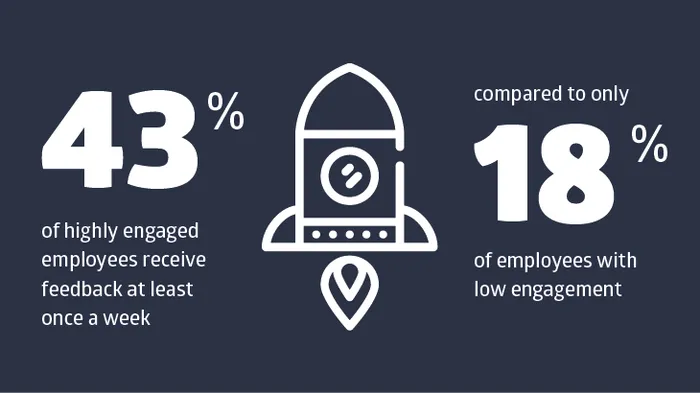
Grow a management team that focuses on employee engagement
- Hire and promote the right people. Don’t base your selection purely on performance — a great performer might not have the people skills necessary to manage a group of employees. Instead, look for a mix of performance, culture fit, and empathy.
- Train them to do the right thing from the start. Managers should not be left to guess what’s expected of them. Make sure you have written managerial guidelines that cover most (if not all) manager-employee scenarios.
- Invest in their growth. While not everyone can be a good manager, people with the aptitude for it might also need some training. Make this training available through knowledge sharing sessions facilitated by HR guest speakers and leading experts sharing their knowledge with your middle management team.
- Hold managers accountable. Improving the engagement of direct reports should be one of the KPIs for your managers. Stress that fact, and make it clear that you will be holding them accountable for the development and the growth of their teams.
Recognition and rewards done right

Money and benefits are important considerations for people applying for a position at your company. That said, they are not the reasons why people choose to stay — or to leave. With everything else remaining the same, employees choose to stick with their companies because they fulfill more than just their basic needs. Some of the strongest of those needs have to do with respect, recognition, and self-fulfillment.
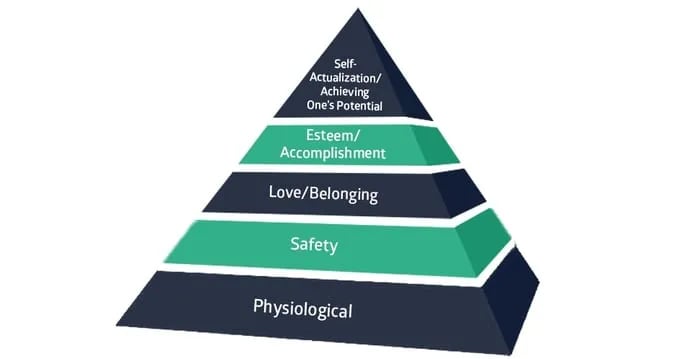
Maslow’s hierarchy of needs illustrates this quite nicely. A simple “great job” that an employee hears from their manager, and a good peer-to-peer recognition program are both much more effective when it comes to fulfilling the needs from the top of Maslow's pyramid. And, they are what your managers need to focus on in order to boost employee engagement.
According to a Gallup6 poll, employee engagement can fluctuate widely, depending on how a manager handles the individuals on their teams:
- When a manager focuses on someone’s strengths, the chances of that employee becoming disengaged drop to about 1%.
- When they focus on someone’s weaknesses, that employee has a higher chance of becoming disengaged (around 22%).
- On the other hand, if a manager completely ignores an employee that employee’s chances of becoming disengaged soar to 40%!
This is why the role of managers in maintaining (and boosting) workplace engagement should never be dismissed. Oftentimes, managers are the ones that can have the most direct influence on employees. Their actions and words can either inspire and drive forward employees, or throw a wrench in their performance engine.
Unsurprisingly, peer-to-peer recognition matters as much as managerial recognition. Peer-to-peer recognition can be formalized and include a monetary incentive (bonuses awarded by employees to one another for going above and beyond on a particular project), but they don’t have to be. They can simply be a part of a company culture in which employees are encouraged to recognize each other’s achievements on a regular basis.
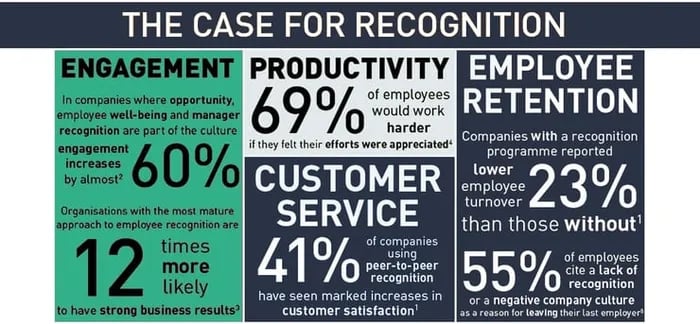
Many recognition programs have a monetary component to them, your ability to attach some emotion to that money is what makes them or breaks them. Conceptualizing these rewards so that employees feel that they are contributing to the success of the organization when they are selected to receive them is key. That’s why profit-sharing and equity reward schemes work that well - they encourage employees to identify with that success, making them feel like they actually and truly belong. And, that’s the kind of recognition that does wonders when it comes to increasing employee engagement.
At Ambassify, we tend to de-emphasize monetary rewards whenever we can. We feel that they are the least effective out of the bunch and that employees respond much better to rewards that offer visibility, access, or involvement. We wrote about it extensively in our blog post about rewarding advocates, so make sure to give it a read if you want to know more.
Build your employee recognition program with Ambassify
Get in touchAgain, you don’t want to rely solely on formalized recognition programs. Their whole purpose is to reinforce your recognition-based culture, and that starts with hiring managers that know how immensely valuable a simple pat on the back can be.
“People often say motivation doesn’t last. Well, neither does bathing- that’s why we recommend it daily.” — Zig Ziglar, Salesman & Motivational Speaker
How to build a recognition-based company culture
- Talk about the importance of workplace recognition. Connect the dots for your managers, and teach them how vital recognition is to employee engagement. It’s a good idea to semi-formalize this and build it into your management training.
- Have weekly recognition activities. Consider starting off the week with a quick kudos session. This can be a short departmental all-hands-on-deck session where employees can thank a colleague for help during the previous week.
- Create formal recognition programs. Monthly or quarterly awards provide employees with a goal they can strive toward.
- Attach emotion to money and rewards. Allow employees to feel proud when they receive a bonus. Make the remuneration more about their contribution to the company goals than about the money itself.
- Encourage employees to give kudos generously. But don’t make it feel like work. Your managers should lead the charge, and signal to employees that it’s more than OK to praise colleagues for a job well done. Reinforce this organic behavior through a peer-to-peer recognition program.
Workplace relationships and friendships

Although we are all often cautioned to keep our personal and professional lives separate, most recent studies on employee engagement have a bone to pick with that piece of advice.
A recently published Gallup study found that employees who say that they have a best friend at work can be up to 50% more engaged than those who don’t. Despite running against the established grain, this assertion makes sense.
The time when we went to work just to earn a paycheck is long gone. Today, employees expect more from their work — they expect adventure, friendships, and a sense of purpose. Considering that we all spend more time at work than at home, those expectations are not so unreasonable.
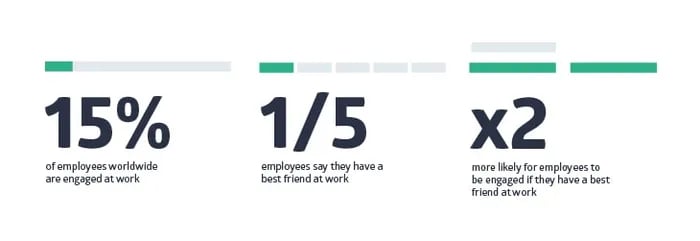
According to Gallup, employees who have a friend at the office are X2 more likely to be engaged. It comes down to the feeling of belonging — employees feel a greater responsibility toward friends than they do towards faceless corporations.
While it’s true that you can’t really force people to be friends, you can create an environment that encourages the formation of such bonds. It’s a delicate line to walk, for sure, but failing to do so can result in low overall workplace engagement. It’s the company’s responsibility to create conditions in which employee friendships can flourish. Your employees are adults - they will know where to take things from there.
How to build a company that values workplace friendships
- Encourage people to get to know each other. Explore the idea of cross-departmental teams to help employees get to know one another.
- Promote open communication and collaboration. Employees should not have a fear of speaking up. Quite the opposite — they should feel that they can voice their opinions on matters, and even propose ideas and initiatives. This creates an environment that’s conducive to forming closer relationships.
- Organize social activities. Things like company sports teams, after-work parties, retreats, and team-building outings all give employees an opportunity to get to know each other better outside of work. They are a way to explore mutual interests and connect on a personal level.
Measuring employee engagement

What gets measured, gets done.
There is no point in any of the employee engagement-boosting activities described above if you don’t know how they are affecting your workforce. To know that, you need to have a system in place that allows you to periodically measure employee engagement levels, preferably after implementing some engagement-boosting activities or procedures.
The metrics system you come up with will be a combination of different things - pulse surveys, employee net promoter score, exit & stay interviews, and one-on-one interviews. How much you focus on each of these is going to depend on your organization
If you’re serious about employee engagement, you should be collecting this data as often as you can. The great thing about pulse surveys is that they don’t take more than 5 minutes, so doing them on a monthly basis is more than feasible, and won’t result in employee resentment.

The Ambassify platform is great for designing and distributing these questionnaires — your employees will have instant access to them, and the data collected can then be dissected by your HR teams to pinpoint which departments need to focus on what.
Once you have the data you need, it’s time to act on it. This is what separates the companies that truly care about employee engagement from those that just pay lip service to it. How you proceed will depend on your organization, as well as the level of effort you’re willing to put in, but here’s what we’re suggesting:
- Share the results of the surveys. And thank your employees for participating. They will appreciate that you’re keeping them in the loop, and you can consider this the first step in the ongoing process of boosting employee engagement.
- Hold an all-hands-on-deck meeting. Take a moment to discuss the results with as many employees as you can. Although you’ve already explained the purpose of the surveys, emphasize the importance of your company’s focus on employee engagement. Get everyone’s buy-in and discuss what (and how) will be done in order to improve the results.
- Make time for one-on-one meetings. You have the rough numbers but now you need the details. Have your managers organize one-on-one meetings where they will ask employees questions about each of the metrics in order to learn what actions need to be taken to address the issues.
- Pick a sub-metric to work on for a set period of time. Focus on one thing at a time, and try going for the low-hanging fruit first. For example, take three months and work on employee advocacy (or well-being) before shifting your focus to a different employee engagement element.
- Rinse and repeat. Keep collecting the data and discussing and implementing the next steps with your team. Remember, when it comes to employee engagement, even incremental increases are good because they yield great results, and you’re in it for the long haul, in any case.
Employee engagement ideas can still make a big difference
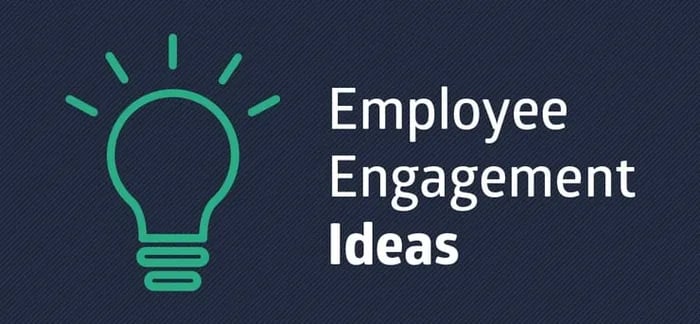
There’s no denying that employee engagement activities can be very costly. If you decide that it’s an investment worth your time and effort — as well as a dedicated budget —, you need to keep in mind that what you’re potentially getting back is a lot more than what you’re putting in.
That said, there are things that you can start doing today that only require a bit of time and a change of attitude. These things include:
- Written internal advancement plans. Map out how employees can advance through the company ranks, and make this available to everyone. This makes it easier for the employees to visualize their career path, and to see where in your company they see themselves in the future. Employees that are able to do that are much more likely to invest extra effort into their day-to-day tasks.
- Official TGIF hour. Instead of finishing at 5 pm on a Friday, why not make it 4 pm, and invite everyone in the office for a drink in the meeting room? Let’s face it — nothing gets done in that one hour before the weekend officially commences, so why not collect some “employee appreciation” points.
Of course, employee engagement activities are not a one-size-fits-all kind of thing. Everything you end up implementing needs to be a) in line with your company culture, b) something your employees appreciate, c) doable on a budget you have available. That said, with a bit of effort and a lot of imagination, you can find ways to boost workplace engagement without spending thousands in the process.
What you can do today to grow employee engagement

It’s a lot, we’re acutely aware of that. And, while you do have your work cut out for you, at least now you know how all the pieces of the puzzle actually fit together.
Our final advice to you would be not to overwhelm yourself. Working on employee engagement seems like a monumental task after reading this, but you need to remember that it’s a process, not an event. You don’t have to do every item on the list immediately — and you definitely don’t have to get started on everything tomorrow.
Before implementing any changes, sit down with your team and discuss the benefits of investing in increasing employee engagement. Ask your employees for their take on things, talk budgets and timelines, and test the waters with small changes. You will quickly learn that every dollar you invest in workplace engagement yields a massive return.